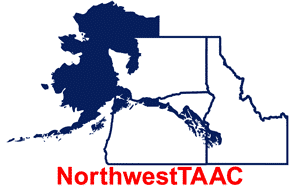August 9, 2009
Alaska Journal of Commerce
By Laine Welch
Is competition from foreign imports biting into your business? Trade Adjustment Assistance programs are designed to help American workers and businesses become more competitive. Three TAA programs have been funded again, under the U.S. Departments of Labor, Agriculture and Commerce.
“Salmon pollock, crab – we can find imports coming in for just about any seafood, so therefore, they would qualify,” said Gary Kuhar, director of the nonprofit Northwest TAA Center, which administers funds for the Commerce program in five states, including Alaska. “Our program focuses on helping the firm, and secondarily, saving jobs. We’re the only program that not only helps develop a strategic plan, we implement the plan for them,” he added. NorthwestTAAC also handles all the paperwork and federal bureaucracy.
First, a client must show that his or her business has been hurt by foreign imports.
“We have to show a 5% decline in sales or production, and a decline in employment, and then be able to tie it into an increase in imports over the past three years. We also talk with former customers that are now buying a product or service from a foreign source,” Kuhar explained.
The NorthwestTAAC program is best suited for medium to large businesses, but it is also open to co-ops, associations and individuals. Small companies can get grants up to $30,000; for large firms, the limit is $150,000. Both require some cost sharing.
“If your heart is set on buying equipment, we’re not the program for you. But if you’re interested in becoming more vertically integrated and taking over some of your own marketing efforts – we do a great job in creating brand identification, brochures and labels in multi languages, and web site development.
“It could be a fish marketing firm that has lost sales of Alaska salmon, say, in Iowa to a foreign source like Chile, Canada or Norway,” Kuhar said. “We’ve helped a Southeast seiner develop an eco-tour business – they wanted to get out of the salmon industry but had a nice 58 foot seiner and they didn’t know what to do with. Another salmon fisherman is now selling his canned pack in Eastern Europe. We’ve designed a small hydroelectric dam for a sheep rancher in Idaho. He’s now generating over a quarter million dollars a year in electricity, and using it to keep his sheep operation going. We’re really only limited by our imaginations.”
Reprinted with permission
